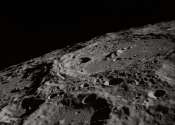Fully inkjet-printed vanadium dioxide-based radio-frequency switches for flexible reconfigurable components
Inkjet-printed switches make multiple frequency bands easier and cheaper to manage in wireless devices.

Inkjet-printed switches make multiple frequency bands easier and cheaper to manage in wireless devices.
Materials Science
Jan 24, 2019
0
4

DARPA's Radio Frequency Risk Reduction Deployment Demonstration (R3D2) is set for launch in late February to space-qualify a new type of membrane reflectarray antenna. The antenna, made of a tissue-thin Kapton membrane, packs ...
Telecom
Jan 23, 2019
0
10

In recent years, behavioral patterns of social creatures, such as humans, cattle, ants, etc., have been discovered by using wearable sensors called Radio Frequency Identification (RFID) devices (Figs. 1).
Social Sciences
Jan 16, 2019
0
0

ESA's technical centre in the Netherlands has begun running a pulsar-based clock. The "PulChron' system measures the passing of time using millisecond-frequency radio pulses from multiple fast-spinning neutron stars.
Astronomy
Dec 28, 2018
0
21

Beep" is not a sound you expect to hear coming from a hummingbird feeder. Yet "beeps" abounded during a study led by the University of California, Davis to monitor hummingbirds around urban feeders and help answer questions ...
Ecology
Dec 12, 2018
0
114

China was preparing to launch a ground-breaking mission early Saturday to soft-land a spacecraft on the largely unexplored far side of the moon, demonstrating its growing ambitions as a space power to rival Russia, the European ...
Space Exploration
Dec 7, 2018
2
577

Scientists have developed a method to enhance the activity of enzymes by using radio frequency radiation. The method requires a special complex of enzymes and magnetic nanoparticles. The particles can adsorb radio emission ...
Biotechnology
Nov 26, 2018
0
4

Reseachers at ETH Zurich have developed a modulator with which data transmitted via millimetre waves can be directly converted into light pulses for optical fibres. This could make covering the "last mile" up to the internet ...
Optics & Photonics
Nov 21, 2018
1
40

A new optical modem, capable of sending high-definition quality video significantly faster than standard radio frequency systems, is being developed for NASA's Orion spacecraft. The hardware, offered by LGS Innovations, is ...
Space Exploration
Nov 12, 2018
6
33

How can you make a high-frequency MRI machine more precise? By taking an electrical engineering approach to creating a better, uniform magnetic field.
General Physics
Oct 31, 2018
0
88